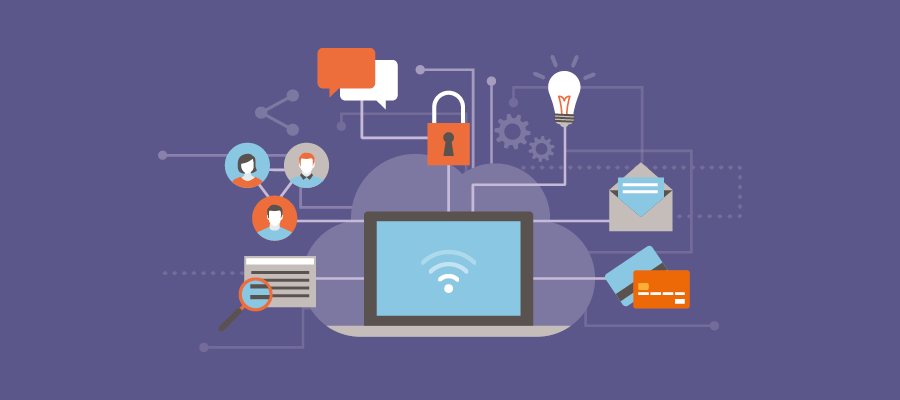Remote work is here to stay. After the COVID-19 pandemic forced many to work from home, people don’t want to go back to the office – and for good reason.
Remote work has many benefits, including more flexibility, better work-life balance, larger talent pools, and fewer office costs.
But remote work environments also have their challenges. For example, they often provide less structure, are harder to manage, and present new data security threats—especially when you allow employees to work on their own personal devices—and this at a time when data security is more important than ever.
That’s right. Cybercrime is on the rise. In fact, cybercrime costs are expected to grow by 15% every year over the next few years and could cost the world $10.5 trillion annually by 2025!
To avoid becoming a victim of a cyber attack or a data leak, remote workers need to follow best data security practices (to learn about top security tips for remote workers, click here).
To ensure your employees keep your business data safe, here are some best security practices you can adopt today:
Establish strict data security policies
The first step is to make data security a top priority. Your employees may not realize how important data security is, so it’s up to you to establish appropriate safety policies.
For example, you could require employees to use company laptops for work purposes so that you have more control over how they use your business’s information.

Whatever policies you decide to implement, make sure to have new and existing employees review them and sign that they agree to abide by them (whether or not they work remotely).
Require strong and varied passwords
One of the most basic security measures you can take is to use strong passwords.
This means avoiding predictable passwords like 123456, abcdef, password, qwerty, and so on. You also don’t want passwords to include personal references to names, hometowns, addresses, birthdays, pet names, or the like. Instead, require passwords to be long and complex with a variety of letters, numbers, and symbols.
In addition, don’t use the same password for everything. Every password should be unique. If you struggle to keep track of different passwords, use a password manager like LastPass, 1Password, or Bitwarden. They will keep track of your passwords for you (in a secure way) and even help you generate new random ones.
Implement multi-factor authentication (MFA)
Multi-factor authentication (MFA) adds an extra layer of security when logging into accounts. Sometimes known as two-factor authentication (2FA), MFA confirms users’ identity by asking for another piece of information beyond your username and password. Usually, this is a code sent to your phone, but it can also be biometric data like a fingerprint, an eye scan, or voice detection. Choose an MFA solution that is convenient but also meets your security standards.
Use encryption methods

Encryption refers to the scrambling of data so that only authorized users with an encryption key can decode the information. Your business should use end-to-end encryption with all of its emails, chats, and other messaging apps. This will help protect sensitive information from getting into the wrong hands. You may even consider storing data on encrypted hard drives.
Install firewalls and antivirus software
A firewall protects your company’s network from unauthorized or dangerous traffic. It’s best to install them across all of your company’s networks.
You should also require employees to have antivirus software and anti-malware installed on their devices (including laptops, tablets, and smartphones). This will further protect your company’s data from viruses and malware.
Other software protections you should adopt include installing security updates on your operating system regularly and using a secure web browser like Brave. Each of these safety measures adds another layer of security
Secure remote connectivity with virtual private networks (VPNs)
Another way to secure your business networks is through virtual private networks (VPNs). Instead of putting your business data at risk by allowing employees to work on public wi-fi networks, require them to use a VPN.

A VPN will encrypt internet traffic (even from public networks) so that your company data remains secure. Shop around for different VPNs and compare prices, features, reviews, and more. Just make sure whatever VPN you choose meets your security standards.
Provide data security trainings for employees
To keep your company’s data secure at all times, host regular data security trainings for your employees. This is a great opportunity to educate them on the latest cybercrime threats, risks, and trends. For example, you could teach a session on phishing emails and how to respond to them. The more trainings you hold, the more likely your employees are to maintain good data security habits.
Perform regular security audits
Security audits can alert you to vulnerabilities or weaknesses in your business’s data infrastructure. Perform regular internal audits by hiring a third-party auditor who can provide a fresh set of eyes. This will give you a neutral evaluation of your company’s data security and help you know where you can make improvements. In addition to regular internal audits, considering a comprehensive security audit from Safetica can provide an extra layer of protection for your business’s data infrastructure.
Monitor data usage
Monitor the data that comes in and out of your business with different data monitoring apps. This lets you see what data is being shared and with whom so that you can detect threats early on before they turn into bigger problems.
Restrict user access

Lastly, restrict access to your company’s data. Only give access to authorized users who need the data to do their work. Otherwise, data should be confidential by default. That way, there’s less chance of it getting in the wrong hands.
Adding it all up
Every business wants to protect its data. After all, one data breach could bring an entire business under. That’s why it’s important to take appropriate security measures like the ones above.
Even if you only implement a few of them, it will go a long way in helping your company’s data stay safe. So don’t hesitate and start today!









